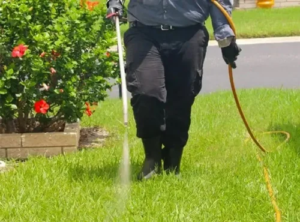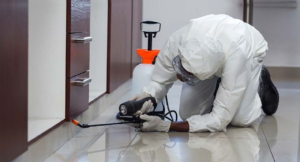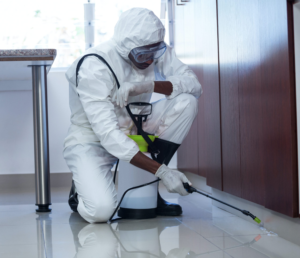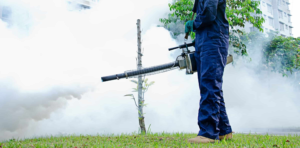Pest control involves a combination of physical, biological and chemical techniques. Threshold-based decision-making focuses on managing the problem while minimizing harm to humans, pets and wildlife.
Chemical pesticides come in the form of sprays, powders and baits. They can be dangerous if they are inhaled or ingested, so always follow the instructions on the label. Contact Trapping USA Animal Removal & Pest Control now!

Some insects are viewed as pests because they damage crops or spread disease organisms. However, many insects pollinate flowering plants, provide useful substances such as honey or silk, and control pest insect populations. In addition, some insects are valuable to humans for their recreational and aesthetic value, as food or as pets, or as study subjects in elucidating such aspects of biology as genetics, physiology, hormones and sense organ function.
Insects are part of the phylum Arthropoda, which also includes crustaceans and arachnids such as spiders and scorpions. Insects have a wide range of mouthparts. Some suck liquids such as nectar and water with a tube called a proboscis, while others chew or pierce leaves and other plant material with incisors or teeth. Many insects have antennae that serve to help them detect sounds, smells and other environmental cues.
The most common way humans attempt to protect crops from insect damage is by spraying them with insecticides. However, pesticides are expensive and toxic to both people and other animals, including beneficial insects and pollinators. They also don’t always kill insects at every stage of their life cycle, leaving populations to return to damaging levels.
A growing number of growers are turning to parasitoids and predatory insects as an alternative to chemicals. These insects are reared and conditioned on alternative hosts prior to being mass-released as pest control agents. However, the success of this approach is largely dependent on the ability to identify effective semiochemical blends that mediate host recognition in parasitoids and crop-plant odors in crops.
Continuing studies of insect learning may provide insights for improved biological control of pest insects in agricultural and forestry applications, disease vector control and even urban pest management. For example, an understanding of the ways in which the invasive emerald ash borer learns could lead to strategies for controlling this devastating tree pest.
In the short term, preventive application of a systemic insecticide can protect ornamental and fruit trees from the invasive emerald aphid. Such treatments are most effective when applied before the aphids begin to appear in spring, well before trees are dug for transplanting.
Rodents
Rodents (squirrels, mice, rats and squirrels) are non-native species that can cause serious damage in our area. They compete with native wildlife for food and shelter. They also introduce diseases to humans, livestock and crops. Their droppings and urine contaminate food and drinking water supplies, cause fire hazards and destroy structures. They gnaw on electrical wires, which can lead to fires and short circuits.
The order Rodentia contains many species, ranging in size from the smallest mammal to the largest bird. They share similarities in body plans, behavior and a habit of eating seeds and scavenging for food. Rodents that live in grasslands and forests serve an important role as prey for predators, scavengers and plant eaters. The same characteristics that make them valuable members of their habitats are what make them pests when they enter buildings, threaten people’s health and safety, contaminate food and water and destroy property.
Inspect for signs of a rodent problem, including droppings and pilfered food items as well as rub marks (dark oil stains caused by rubbing against surfaces) and gnaw or grease marks on walls, corners, travel ways and other places where rats and mice frequent. Also check for scurrying sounds, droppings, burrows or tracks and signs of urine (use a black light). Place nontoxic monitoring bait blocks in tamper-resistant stations in inaccessible areas such as behind sinks, under stoves and in crawlspaces. Also consider glue boards, snap traps and shock traps for lethal control.
The best way to prevent rodent problems is through sanitation, exclusion and lethal control. Remove food and water sources by fixing leaks and removing piles of debris or trash that provide shelter for rodents. Inside the house, clean before and after meals, keep counters and tables free of food scraps, store garbage in rodent-proof containers and regularly sweep floors. Fixing sagging or loose roofs, gutters and downspouts and eliminating standing water around air-conditioning units are other important preventive measures. For an integrated pest management program, combining both trapping and baiting methods is generally effective. Both are more effective than single-method control, and trapping does not require the use of pesticides.
Termites
Although termites play an important ecological role by breaking down dead vegetation and returning nutrients to the soil, they can be devastating to structures that are built from wood. The National Pest Management Association estimates that termite damage costs property owners $5 billion a year. Unlike standard pest control, which targets individual insects, specialized termite control requires an experienced professional to ensure complete colony elimination.
Termites are social insects that live in colonies consisting of different castes (workers, soldiers, and reproductives) with distinct roles. Workers are colorless, blind, and wingless, and they are the largest caste in a termite colony. They scavenge for food, and they construct mud tubes (passages) from their underground nest to food sources such as houses and furniture. Seeing piles of these tubes on the exterior of your home is one of the most common signs of termite infestation.
Soldiers are larger than workers and have darker heads. They have functional eyes and more robust skin than the other castes. They are known to aggressively defend the colony and are responsible for damaging the structure of a house. Reproductives, or neotenics, are new adults that develop from immature reproductive organs after the death of adult swarmers.
A termite infestation is a complex problem, and many homeowners do not know they have a serious issue until significant damage has occurred. A reputable pest control company will provide regular termite inspections and recommend treatment options to prevent a costly infestation.
When choosing a pest control company, look for a company that offers a warranty. This will guarantee that the company will re-treat your home if the termites return. Also, ask for a copy of the pesticide product label. This will tell you exactly how the product is to be used and any possible risks.
Some pest control companies offer preventative services such as soil treatments, which create a fortified barrier in the ground that disrupts the termite tunneling path. Other services include trenching, which involves digging a trench along the perimeter of your home and filling it with a termiticide. As the termites pass through the treated area on their way to and from the food source, they encounter the deadly substance and die.
Bed Bugs
Bed bugs are a challenging pest to control. Their small size, cryptic coloration and feeding habits make them difficult to find and treat. They also have developed resistance to many insecticides. A combination of preventive measures and a comprehensive treatment plan is necessary to eradicate them.
Early detection of a bed bug infestation is essential to a successful outcome. This includes regular inspections, cleaning and vacuuming, keeping bedding and furniture free of clutter and using a mattress encasement.
It is also important to understand how the pests live and breed. The insects are primarily active at night, but may seek hosts during the day as well. They tend to harbor close to where they feed and can easily travel 5-20 feet between hiding places, allowing them to quickly infest new areas.
They are typically found in the seams, beading and folds of mattresses and bedding, but may also inhabit cracks and crevices in bed frames, second-hand furniture, dressers, walls, wood paneling, door and window frames, behind pictures, and other hidden locations. They can also be carried between apartments or rooms in multi-unit dwellings by movers, infested luggage and second-hand clothes.
Infestations of this type are usually detected by blood smears on bedding and brownish black specks on the surfaces of furniture and walls, along with a characteristic musty-sweet odor. It is also possible to detect a heavy infestation by observing tiny amber-colored “shells” (shed exoskeletons).
Chemical control of a bed bug infestation includes liquid and aerosol sprays, dusts and baits. However, the insects have a high tolerance to these products and can become resistant, much like bacteria can. Therefore, IPM programs should include a mix of pesticides and non-chemical methods.
Some species of bed bug are parasites of bats and birds, and some bite people when they are roosting in or nesting on the wild hosts. It is important for health professionals and other service providers to recognize this, so that the appropriate treatment, including roosting and nesting elimination, can be implemented. Also, they should be careful not to transport bed bugs from a host residence into the workplace and vice versa.







